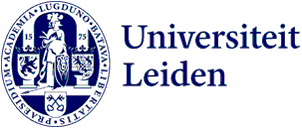
Dutch Cancer Society allocates funds to a mathematician: for treating Ewing sarcoma with the help of an app
If doctors could better estimate a patient's chances of survival, this would help in choosing a specific treatment. It would be particularly beneficial for the rare and malignant Ewing sarcoma, which mainly affects children and adolescents. Mathematics professor Marta Fiocco has been awarded a substantial KWF grant to combine mathematical and medical knowledge in order to make this come true.
When someone, usually a child, has Ewing-sarcoma, the difficult decision to amputate an arm or leg may arise. Given a poor prognosis, it is sometimes best to focus the treatment on maintaining the quality of life. However, how do clinicians decide what advice to give? The disease occurs in many different parts of the body and is so sporadic that doctors find it challenging to assess.
Ewing sarcoma is a malignant tumour that primarily originates in the bone, and sometimes in muscles or connective tissue, such as in the thigh or pelvic bone. The rare disease affects 30 to 35 new patients in the Netherlands each year, with the majority being under 25 years old. The survival rate is 55 to 70 percent.

Marta Fiocco sees opportunities to support treatment with data
Applied Mathematics Professor Marta Fiocco sees opportunities to support the treatment of Ewing sarcoma. Fiocco says, ‘It is the first time that KWF has granted funding to a mathematician. We will develop an app that allows doctors to estimate survival chances.’ The doctor enters patient data and medical parameters into the app, which then predicts the patient's survival chances during the treatment process. ‘If the chance of survival becomes very small, or the chance of the disease recurring becomes very high, the doctor and patient can consider avoiding a highly burdensome operation. They may choose, for example, only radiation or a limb-sparing surgery, focusing on the quality of the remaining life.’
Project INDICATES with € 935,000 KWF grant
Marta Fiocco is the project leader of INDICATES: INDIvidual loCAl Therapy for Ewing Sarcoma. Its goal is to develop a new clinical prediction tool. KWF Cancer Research awarded €935,000 for this. Fiocco does not only work as a medical statistician at the Mathematical Institute (MI) of the Faculty of Mathematics and Natural Sciences but also at the Biomedical Data Science Department of LUMC and the Princess Máxima Center for Pediatric Oncology in Utrecht.
Only with a lot of data success will be possible
Mathematicians, in collaboration with clinicians, are developing a user-friendly app for doctors. Marta Spreafico, Fiocco's colleague at the MI, will apply the necessary statistics to make optimal predictions as the supervisor of a yet-to-be-recruited PhD researcher. Fiocco says: ‘We can only do our work if we have as much data as possible about patients and treatment outcomes. Michiel takes care of that.’
Fiocco refers to Michiel van de Sande, a professor of orthopedic oncology, especially pediatric orthopedic oncology, working at LUMC and the Princess Máxima Center for Pediatric Oncology. Fiocco says: ‘He has an excellent network of colleagues in Europe. Through those contacts, he can provide the data we need.’ Additional oncological expertise within the project comes from professors Hans Merks (group leader at Princess Máxima Center) and Hans Gelderblom (LUMC).
Possibly more apps like this in the future
This is not Fiocco's first research project in the field of personalised oncology. For some time, she has been developing statistical models to make a good estimate of the survival chances of oncology patients, particularly focusing on young cancer patients. Based at the Mathematical Institute, she leads the interdisciplinary Data Analysis and Survival for Personalised Oncology group. ‘We already have some experience with oncological apps.’ Together with Michiel van de Sande, Fiocco developed an app for prognosis in soft tissue sarcoma occurring in the arms and legs. ‘Perhaps we can do that in the future for other types of cancer.’
Text: Rianne Lindhout
